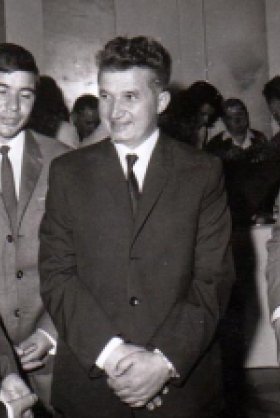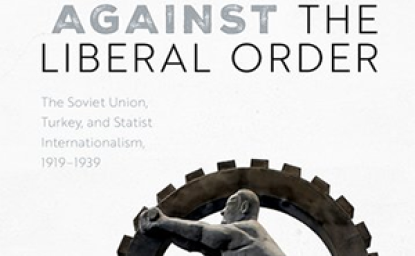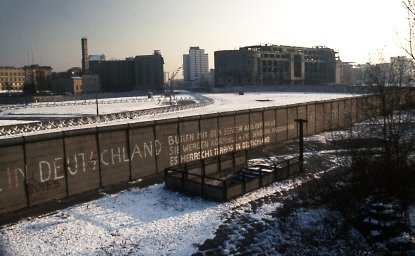Poland and Romania: The Loyal Republic and the Maverick


This is a selection of the most interesting documents produced by the Embassy of the Polish People's Republic in Bucharest from 1968 to 1977. The first date is a watershed, as in 1968, due to the developments in Czechoslovakia and the position of the Romanian leadership on the events, the Embassy greatly intensified its activity and began to prepare more detailed reports. The year 1977, on the other side, is important because of the internal collapse in Romania, exacerbated by a giant earthquake in Bucharest, the emergence of an organized democratic opposition and the mass strikes of miners in the Jiu Valley.
CWIHP e-Dossier No. 39 - Introduction by Adam Burakowski
Documents from the Archives of the Polish Ministry of Foreign Affairs
Poland and Romania have a long tradition of cooperation. Since the modern era the two countries (in the case of Romania we speak of the Danube Principalities) maintained fairly close relations, both commercial and cultural. When Poland regained independence in 1918, Romania became one of its most important allies – the two countries had a common border running through the territory of present Ukraine. After World War II, both countries were occupied by the Red Army, and then, after the seizure of power by the communists, entered the sphere of the Soviet bloc, actively participating in the establishment and operation of its main institutions, the Warsaw Pact and the Council for Mutual Economic Assistance (Comecon).
Since the establishment of diplomatic relations after World War I, the Polish embassy was located in a residential district in the north of Bucharest, on the 23 Aleea Alexandru. The building later changed owners several times. During World War II it housed the Gestapo headquarters in Romania. After the country was taken by the Soviets, a makeshift headquarters of the Central Committee of the Romanian Communist Party was located there. Romanian communist officials, among them the then-leader Gheorghe Gheorghiu-Dej, had their offices there.
Stefan Foriș was held there – the former First Secretary of the Communist Party of Romania, who fell out of favor and was murdered together with two other party activists in the basement of the building. In 1947, the property was returned to communist Poland and then the embassy was located there. Shortly before that, the bodies of Foriș and his two companions were buried in the garden. In 1967, as a part of an investigation at the request of Nicolae Ceauşescu, the bodies were exhumed.[1] A well-known intelligence officer Ion Mihai Pacepa, who fled to the West in 1978, lived in the building next to the embassy of the Polish People's Republic (PPR).[2]
The Polish People's Republic did not have too intensive cooperation with Romania (1947-1965 Romanian People's Republic, 1965-1989 Socialist Republic of Romania, or SRR) throughout the period of its existence. Mutual relations were not especially significant for either country. At the time of Stalin, neither of these countries led an independent foreign policy, even for a limited period. This situation began to change after Władysław Gomułka came to power in Poland (1956) and after the withdrawal of Soviet troops from Romania (1958) and also after Romania started to search for its own place in the Soviet structures in the early sixties.
When Bucharest began to pursue a more independent foreign policy in the second half of the sixties (failing to emulate Soviet policy toward the Sino-Soviet schism or the 1967 Arab-Israeli War), Warsaw distanced itself but showed no particular hostility. In 1968, when Romania refused to participate in the aggression of the Warsaw Pact countries against Czechoslovakia, its relations with other countries of the Soviet bloc, including Poland, chilled further, but at the beginning of the next decade they slowly returned to normal. Over the years, the PRL and the SRR had less and less in common. Economic difficulties which began to occur in the two countries resulted in a decrease in trade and consequently in the decline of mutual contacts. In 1979 Romania unilaterally changed the rules for car fuel accounting, which resulted in the total collapse of Polish tourism in the country.
After Wojciech Jaruzelski imposed martial law to crush the Solidarity movement in Poland in December 1981, Polish-Romanian relations briefly improved, as Jaruzelski's internal politics resembled some of those Ceaușescu had carried out in Romania. Later, both countries have increasingly diverged, and their relations began to be characterized by mutual resentment. Romania was increasingly isolated in the international arena and Poland had no interest to act differently than the other countries of the Warsaw Pact. During the last years of Ceaușescu's regime, Polish-Romanian relations practically did not exist and never went beyond the purely formal, multilateral meetings and trade at a minimum level.
Despite so little attention paid to relations with Romania, Warsaw sent to Bucharest very talented diplomats. During the period, which is covered by this selection of documents, the PRL had two ambassadors in Bucharest. Jaromir Ochęduszko held the post from February 13, 1968 to November 15, 1973; his successor was Władysław Wojtasik, who represented Poland from November 15, 1973 to May 2, 1979.[3] The diplomats’ performance was highly rated by the head office of the Ministry of Foreign Affairs in Warsaw and the reports sent from Bucharest were considered a valuable source of information, which was evidenced by the periodic evaluation of the work of this post. The embassy staff drew information from three kinds of sources: the official Romanian mass media, contacts with Romanian officials, politicians and people of culture and contacts with the diplomatic corps, especially Soviet colleagues.
This is a selection of the most interesting documents produced by the Embassy of the Polish People's Republic in Bucharest from 1968 to 1977. The first date is a watershed, as in 1968, due to the developments in Czechoslovakia and the position of the Romanian leadership on the events, the Embassy greatly intensified its activity and began to prepare more detailed reports. The year 1977, on the other side, is important because of the internal collapse in Romania, exacerbated by a giant earthquake in Bucharest, the emergence of an organized democratic opposition and the mass strikes of miners in the Jiu Valley. These events caused the closure of the system, limiting contacts with other countries of the Soviet bloc, including Poland, and a significant increase in the scale of control over society, which was naturally reflected in the contents of the reports sent by the PRL Embassy.
In the next reporting period, a great deal of criticism can be noticed, which was previously avoided. For the reasons of thematic proximity I also attached two documents from the diplomatic missions of the Polish People's Republic in Moscow and Beijing, as they are an integral part of the documentation on Romania.
The first document (Document 1) relates to the the 1968 military intervention in Czechoslovakia and reports a conversation about with the Soviet ambassador in Bucharest, Alexander Vasilievich Basov, of August 27, 1968.[4] Basov informed Ambassador Ochęduszko about a conversation he had with Nicolae Ceaușescu on August 25. There is a shorthand transcript of this meeting in Romanian archives.[5] Basov’s version submitted to Ochęduszko differs slightly from what we read in the transcript. The report says: "Ceaușescu insisted that military intervention was a mistake, referring to Marx and Lenin" which has no equivalent in the text of the transcript. From the transcripts we learn that Ceaușescu did not use the term "intervention" let alone "military intervention" as Basov implied; he also did not refer to Marx, but to Lenin only. Thus, according to the transcript, Basov's version showed Ceaușescu's position in a more aggressive form than it was actually formulated.
Showing Ceaușescu's position as more aggressive than it really was could have served the purpose of deepening Romania’s isolation within the Soviet bloc. Some researchers agree with Larry L. Watts' theses: "Anti-Romanian operations were designed with essentially the same ends as INTERKIT [Moscow’s anti-Chinese Soviet-bloc organization]: to isolate the target country from the rest of the socialist community where the negative influence of its heresy threatened Soviet control."[6] On the other hand Basov could have used some mental shortcut, referring to previous speeches by Ceaușescu.
After the Warsaw Pact invasion of Czechoslovakia, the PRL Embassy staff in Bucharest began to look even harder at the development of Romanian-Soviet relations and their effect on cooperation in the framework of the Warsaw Treaty and Comecon as well as bilateral relations. Documents 2 (from the Polish Embassy in Moscow), 3, 5, 6, and 7 relate to these topics. While writing in a rather impartial, informative tone, the authors of these reports seek to highlight those aspects of the situation, which pointed to a normalization of relations within the Warsaw Pact and the strengthening of the relations with Moscow, Bucharest and other capitals of the Soviet bloc.
The cryptogram of September 2, 1972 prepared after Ceauşescu's meeting with Brezhnev in the Crimea (July 31 - August 1, 1972), says even that "among Socialist Countries, Romania did not go beyond the routine only in relations with Czechoslovakia, although there has been some warming." Documents 12 and 13 are written in a slightly different tone. Both are based on the conversation with the USSR ambassador Drezdenko, thus they present the Soviet point of view, a lot cooler in tone to Romania than the previous analysis. It is also possible that they contain similar elements inserted or deleted as the Basov's report on meeting with Ceaușescu, but in this case, their identification is more difficult, because they deal with matters researched much less than the August 1968 events. In addition, in one place, it was stated that "Drezdenko avoids specifics, especially when it comes to the conclusions of the discussion – he said he had not received full, authorized information from Moscow yet.”
Documents 4, 8, 9 and 10 relate to Romanian-Chinese relations in the context of cooperation with the countries of the Soviet bloc, including Poland. The essence of these documents clearly indicates that Romania’s improved ties with Beijing negatively influenced relations with the European countries of the socialist bloc. Reports on these issues are written with some degree of coolness toward Romania, they stress negative aspects, especially those affecting relations with Moscow and its European satellites. The memo of November 6, 1971 clearly states that "Ceaușescu's visit to China [June 1-9, 1971] has chilled relations with the countries of the Warsaw Pact, still developing well in the first half of this year." The sharpest reflection of this line can be found in the cryptogram of September 17, 1973,from Poland’s Embassy in Beijing (Document 8). It states, "Information occasionally obtained from the Romanian diplomats, turn out to be misinformation /after checking/.”
These reports were written from the perspective of Bucharest and did not describe the internal Chinese policies beyond the generalities, such as in a note dated June 5, 1974 (Document 9): "the internal situation in China is unstable, which is carefully and anxiously observed by the Romanians. It has an impact on the reduction in the number of Chinese party-government delegations in general, which also affects Romania." The Beijing document does not deal with internal Chinese politics, but only the behavior of Romanian diplomats. Therefore, the substance of these reports should not be directly connected to INTERKIT[7] project activity, although it is clear that this was the attitude of Polish diplomats in Bucharest, which resulted from the Soviet-Chinese tensions and the fact that Warsaw was in this game firmly on the side of Moscow.
Document 11 is a detailed analysis of the visit of the U.S. President Gerald Ford to Bucharest on August 2-3, 1975. In addition to the formal analysis of the official materials, authors of the report tried to find other sources of information, which resulted in the statement that "we have information that Ceaușescu was an advocate rapid normalization of US-Cuban relations." Much attention was also devoted to the Romanian leader's attempts of mediation in various places around the world, including the Middle East. The report also contains rumors, which, according to the authors of the report, were "‘leaked’ by American diplomats around here" that Ceaușescu stressed the importance of the future of Yugoslavia after Tito's death, which he expected soon (in fact, he died in 1980, five years after the meeting) - Ceaușescu was said to fear "outside intervention at the request of certain circles" in Yugoslavia.
The documents from the PRL Embassy in Bucharest make part of a broader collection that is to be found in the Archives of the Polish Ministry of Foreign Affairs. Similar reports were being made by PRL Embassies in Budapest, Sofia and other capital cities of the Soviet Bloc. We could also find equivalent material in the Romania’s, Hungary’s and other archives of the ministries of foreign affairs. The content shows that the relations among European countries of the Soviet Bloc were much more complicated than many analysts thought before. Unfortunately, only a tiny part of those documents have been translated into English. This e-Dossier is an example of such material.
* * *
The author would like to express his gratitude to the Archives of the Polish Ministry of Foreign Affairs for giving the access to those documents, which have been declassified basing on the law from the year 1999.
Adam Burakowski (b. 1977) - Ph.D. in political science, works in the Institute of Political Studies of Polish Academy of Sciences, for the Polish Radio, the public national broadcaster and for the Euranet Plus, an European radio project. In 2003 he was an intern at the Cold War International History Project. Author of many books and articles, among others: "Carpathian Genius. The dictatorship of Nicolae Ceausescu 1965-1989" (Polish edition 2008, Romanian edition 2011), "1989 - The Autumn of Nations" (together with Aleksander Gubrynowicz and Paweł Ukielski; Polish edition 2009, Romanian edition 2013).
Documents from the Polish Ministry of Foreign Affairs
Translated by Adam Burakowski
Document 1
Cryptogram No 10456 from Polish Embassy in Bucharest, Ambassador Ochęduszko's Meeting with the Soviet Ambassador
Archive of Ministry of Foreign Affairs, D-I-R-0-2420-19/68, 24
Document 2
Cryptogram No 7067 from Polish Embassy in Moscow, Wording of Soviet-Romanian Agreement
Archive of Ministry of Foreign Affairs, D-I-R-0-21-1-73, 66
Document 3
Report, Polish Embassy in Bucharest, 'Romania After the Agreements on Friendship with the Soviet Union, Poland and Bulgaria'
Archive of Ministry of Foreign Affairs, D-I-R-0-22/2/71, 1
Document 4
Polish Embassy in Bucharest, 'Memorandum Regarding Romania's Relations with the European Socialist Countries After Ceaușescu's Visit to Beijing'
Archive of Ministry of Foreign Affairs, D-I-R-2413/8/71, 1
Document 5
Cryptogram No 1144 from Polish Embassy in Bucharest, Romania Strengthening Relations with the Soviet Union
Archive of Ministry of Foreign Affairs, D-I-R-0-2413-6-72, 1
Document 6
Cryptogram No 9517 from Polish Embassy in Bucharest, Romania Moves Closer to the Soviet Union and the Socialist Countries
Archive of Ministry of Foreign Affairs, D-I-R-0-2413-6-72, 2
Document 7
Intelligence Note, Polish Embassy in Bucharest, 'Regarding Soviet-Romanian Treaty of Friendship, Cooperation and Mutual Assistance'
Archive of Ministry of Foreign Affairs, D-I-R-0-21-1-68, 24
Document 8
Cryptogram No 1144 from Polish Embassy in Beijing, Romanian Diplomats in China
Archive of Ministry of Foreign Affairs, D-I-R-0-22-1-73, 3
Document 9
Intelligence Note, Polish Embassy in Bucharest, 'Concerning Romanian–Sino Relations'
Archive of Ministry of Foreign Affairs, D-I-R-2413-2-74, 3
Document 10
Intelligence Note, Polish Embassy in Bucharest, 'Regarding Revival of Relations Between Romania and the PRC'
Archive of Ministry of Foreign Affairs, D-I-R-0-2413-13-75, 1
Document 11
Intelligence Note, Polish Embassy in Bucharest, 'Concerning the Course and Results of the Visit of US President G. Ford in Romania'
Archive of Ministry of Foreign Affairs, D-I-R-0-2413-7-75, 1
Document 12
Cryptogram No 1982/IV from Polish Embassy in Bucharest, Conversation with Ambassador Drezdenko on Romania
Archive of Ministry of Foreign Affairs, D-I-R-0-24120-2-75, 1
Document 13
Cryptogram No 1750/III from Polish Embassy in Bucharest, Conversation with Ambassador Drezdenko on N. Ceaușescu’s Visit to the Soviet Union
Archive of Ministry of Foreign Affairs, D-I-R-0-2413-5-76, 6
Document 14
Intelligence Note, Polish Embassy in Bucharest, 'The Current Status of Romania–PRC Relations'
Archive of Ministry of Foreign Affairs, D-I-R-0-2413-10-77, 1
[1] “Prin Bucureștiul ororilor. TOP 3 CLĂDIRI MACABRE din Capitală,” 7 February 2013, jurnalul.ro, http://jurnalul.ro/special-jurnalul/bucuretiul-ororilor-topul-cladirilor-macabre-din-capitala-636083.html
[2] See Ion Pacepa, Red Horizons (Chicago: Regnery, 1987).
[3] “Kierownicy polskiej placówki dyplomatycznej w Bukareszcie --- lata 1918-2008,” Ambasada Rzeczypospolitej Polskiej w Bukareszcie, www.bukareszt.msz.gov.pl/pl/wspolpraca_dwustronna/historia_i_dyplomacja/bukareszt_ro_a_312/bukareszt_ro_a_301
[4] A.V. Basov was the Soviet Ambassador in Bucharest in 1966-1971. From 1973 he was the Ambassador in Santiago de Chile.
[5] “Stenograma discuțiilor avute cu ocazia primirii de către tovarășul Nicolae Ceaușescu a ambasadorului URSS la București, A.V. Basov, în ziua de 25 august 1968,” M. Berindei, D. Dobrincu, A. Goșu: Istoria comunismului din România, vol. II, Documente Nicolae Ceaușescu (1965-1971), Iași 2012, p. 457.
[6] L. L. Watts, “A Romanian INTERKIT? Soviet Active Measures and the Warsaw Pact ‘Maverick’ 1965-1989,” CWIHP Working Paper No. 65, p.2, http://www.wilsoncenter.org/publication/romanian-interkit
[7] J. Hershberg, S. Radchenko, P. Vámos, D. Wolff, “The Interkit Story: A Window into the Final Decades of the Sino-Soviet Relationship,” CWIHP Working Paper No. 63, http://www.wilsoncenter.org/publication/the-interkit-story
Author

Cold War International History Project
The Cold War International History Project supports the full and prompt release of historical materials by governments on all sides of the Cold War. Read more




